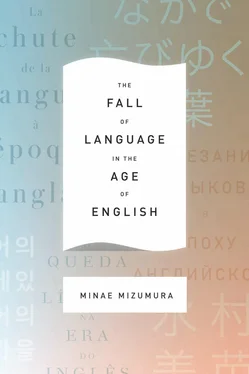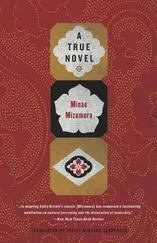Yet, there is a second, underlying reason that Japanese have never given serious thought to the need to protect their linguistic and literary heritage. I am referring to Japan’s geographic location, which, as we have already discussed, has conferred great advantages. Because Japanese people have never suffered any foreign invasions, they have always viewed their language and culture as givens that nothing can ever take away. To them, Japanese language and culture are inseparable from themselves, eternally safe as long as they, the Japanese people, exist — as if the historical constructs of Japanese language and culture were permanently embedded in Japanese DNA. This naïve overconfidence is ubiquitous even among those in a position to actively defend Japanese language and culture.
A recent example is provided by Kawai Hayao (1928–2007), a prominent Jungian psychologist who headed the International Research Center for Japanese Studies and then the Agency for Cultural Affairs, a special body under the Ministry of Education. As we shall see, there was a brief movement around the turn of the twenty-first century to make English an official language of Japan. A reporter for the Asahi Shimbun observed to Kawai, the appointed leader of the discussion, that some people criticized the idea on the grounds that to do so would wreak harm on Japanese language and culture. Kawai responded with supreme aplomb: “They’re misguided. Nobody is saying English will take priority over Japanese. Japanese language and culture will be just fine . If Japanese language and culture are so frail that a little thing like this does them irreparable harm, then good riddance” (emphasis added). 6
Or let us go back a little further in time and take the example of popular novelist Sakaguchi Ango (1906–1955), whose famous wartime essay “Nihon bunka shikan” (A personal view of Japanese culture) contains a pithy and sharply worded, if totally deluded, statement of his belief in the indestructability of Japanese culture. There is no need, he wrote, for the Japanese to cherish a building like the Hōryūji, a temple built in Nara in the first half of the seventh century and the world’s oldest wooden structure: “If necessary we should tear down the Hōryūji and build a railway station. The glorious culture and traditions of our people would by no means be destroyed as a result. Even without the Hōryūji, Japan would go on.” 7Ango makes another declaration about the Katsura Imperial Villa, an architectural gem from the seventeenth century whose beauties were brought to the attention of the Japanese people by German architect Bruno Taut in the 1930s. According to Ango, “Taut had to discover Japan, whereas we have no need to discover Japan, for we are actually Japanese. We may have lost sight of our ancient culture, but it is impossible for us to lose sight of Japan.” Since Ango wrote the essay during the war, his tone is defiant, yet his statement served only to reinforce the naïve overconfidence that Japanese have regarding their culture, and the essay continues to be extremely popular. What Ango and those Japanese readers who nod in agreement at his words do not realize is that other people around the world, by living through repeated foreign invasions, came indeed to “discover” their own countries. He concludes, “As long as the everyday life of the Japanese people is healthy, Japan itself will be healthy.”
Like Ango, Japanese people took it as an article of faith that even if they destroyed their cultural treasures, they would never “lose sight of Japan.” And what has been the effect of this cultural neglect on the Japanese cityscape? With no regulations on architecture apart from safety standards, the market drive to maximize floor area resulted in the wholesale destruction of old structures in favor of a motley assortment of commercial and office buildings of every shape, height, hue, and description; cheap blocks of stacked one-room flats; mismatched small residential developments; snakelike, twisting asphalt roads intersecting absurdly with elevated railroads; pedestrian overpasses with peeled paint where no one sets foot; a tangle of electric wires covering the sky like a spider’s web — in short, unutterable ugliness. I, for one, cannot go for a walk without feeling waves of anger, sorrow, despair. The survival of the Hōryūji is cause for rejoicing, but ordinary street scenes have greater impact on our daily lives.
“Japanese language and culture will be just fine,” Kawai blandly assured the nation, but a country’s urban landscapes are part of its culture, too. Japanese culture was not, after all, “just fine.” And, though Japanese people will not believe it, the language is not “just fine,” either. The only reason they are so confident is that historically, thanks to the favorable geographic location of the Japanese islands, there was never any need to defend the language. Most ethnic groups around the world have had occasion at some point in their history to defend their language passionately from incursions by other groups. The language of every ethnic group on Earth arose accidentally in the course of history, without any intrinsic need to exist. But a language exposed to risk becomes a defining marker of ethnic identity, thereby gaining necessity and becoming the object of passionate defense by its speakers, who regard it as “our own language.” A language that goes undefended will perish. Even if its written word is preserved in books, the books will go unread and so perish. Human history is also a history of war among languages.
Japanese people are now facing a situation without precedent since the birth of the Japanese language. The geographic isolation that long protected that language is a thing of the past in today’s technologically advanced age. “We have no need to discover Japan, for we are actually Japanese.” So wrote Sakaguchi Ango, but what kind of people are “actually Japanese”? The Japanese language is not embedded in anyone’s DNA. I know plenty of people overseas who are Japanese by blood yet cannot speak a word of the language. I know plenty of people even inside Japan who can speak the language yet can barely read a word of it. Can we say unequivocally that they too are “actually Japanese” and have not “[lost] sight of Japan”?
The third and final reason why I believe Japanese people have not prized their language is darker — and more tragic. However strange this may sound to Western ears, most people in Japan are skeptical as to whether their own language has true legitimacy. Yes, for a millennium and a half the Japanese language ranked below Chinese, as was only natural, since Japan was part of the Sinosphere. But people today hardly care about that long-ago era. At issue is the status of the Japanese language in the modern era. Despite their enthusiastic embracing of the ideology of national language, and despite the emergence of Japanese as a fully functioning national language, Japanese people remain unsure if their language is truly legitimate. Undergoing the “shock of the West” also meant seeing Westerners as model human beings and oneself as anything but, a bias that lingers to this day. Foreigners who visit Japan must find it incongruous that any of the faces featured in the advertising flooding the streets are Western. The bias extends to language: Western languages are seen as models for the whole human race to use. While taking justifiable pride in a vibrant literary heritage, Japanese people at some point, without even knowing it, became captive to the notion that only Western languages are valid. Various non-Western peoples surely share a similar sense of estrangement from their own language.
The use of Chinese ideograms naturally reinforced this pervasive self-doubt. Japan was by no means the only country to contemplate banishing ideograms outright after undergoing the “shock of the West.” There have been movements to abolish ideograms even in China, the place of their birth. The same impulse spread throughout the Sinosphere. Abstract concepts derived from ideograms are even more prevalent in Korean than in Japanese, yet in North Korea the use of ideograms is prohibited, and even in South Korea they have all but disappeared, replaced in both countries by hangul , a phonetic script unique to the Korean language. Vietnam, where a still higher proportion of abstract words was originally written in ideograms, switched to the Roman alphabet in the first half of the twentieth century. Even without ideograms, Vietnamese and Korean have continued to function as written languages largely because their pronunciation is more varied and complex than that of Japanese, resulting in fewer homophones.
Читать дальше












